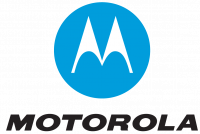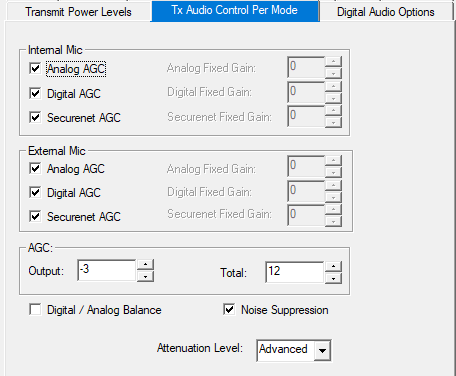Astro25 Series Radios: Difference between revisions
| (5 intermediate revisions by the same user not shown) | |||
| Line 88: | Line 88: | ||
Several radios in the Astro25 line are considered "AN" or "4-meg" radios and contain a smaller flash rom chip (4 megabyte vs 8 megabyte) and are more limited in firmware and feature support. Earlier models of the XTS2500 and the Astro Spectra Plus are considered AN radios and are limited to the firmware version specified below. | Several radios in the Astro25 line are considered "AN" or "4-meg" radios and contain a smaller flash rom chip (4 megabyte vs 8 megabyte) and are more limited in firmware and feature support. Earlier models of the XTS2500 and the Astro Spectra Plus are considered AN radios and are limited to the firmware version specified below. | ||
===Firmware=== | ===Firmware=== | ||
The latest firmware | The latest recommended firmware is R20.50.09 for [[8-meg BN]] radios and R09.00.41 for [[4-meg AN]] radios. R20.50.10 is available for mobile radios but is not recommended due to several bugs reported by users in the field. Motorola no longer supports Astro25 series radios and no further firmware releases will occur. | ||
===Audio Enhancements=== | ===Audio Enhancements=== | ||
In Motorola [[Astro25]] radios, analog and digital audio is processed by the audio DSP before it is sent through the RF section and transmitted. The default settings are fine, and most people will have no complaints with the quality of audio from these radios. However, as found through testing and tweaking by members of [[communications.support]], there exists a much better setting for Astro25 radios that can make the transmitted audio from these units sound even better. These audio settings can be found in the Radio Configuration -> Radio-Wide -> Tx Audio Control Per Mode section of CPS. | |||
The settings are as follows: | |||
* Internal Mic: '''All AGC Checked''' | |||
* External Mic: '''All AGC Checked''' | |||
* AGC | |||
** Output: '''-3''' | |||
** Total: '''12''' | |||
* Noise Suppression: '''Checked''' | |||
* Attenuation Level: '''Advanced''' | |||
See the following image: | |||
[[File:Astro25AudioSettings.png]] | |||
===Text Messaging Service=== | ===Text Messaging Service=== | ||
See [[Astro25 Text Messaging]] | |||
==Software== | ==Software== | ||
Latest revision as of 20:44, 19 January 2024
 | |
| Market | Public Safety |
|---|---|
| Release Date | 2002 |
| EOL Date | 2013 |
| Supported Features |
Conventional Analog Conventional P25 Motorola Type II Trunking P25 Phase 1 Trunking |
The Astro25 series of radios are public-safety and commercial radios capable of digital P25 conventional and trunking operation. The series was introduced in 2002, and was declared end-of-life in 2013, with depot services continuing until 2018.
Models in Line
Portable Radios
Mobile Radios
Features
Flashport Options
Pulled from akardam.net
| Flashcode | Description |
|---|---|
| Q806 | Astro IMBE Digital Operation |
| H14 | Enhanced Digital ID Display |
| Q52 | Federal Government FPP |
| H869 | Hardware Multikey Encryption |
| Q498 | Hardware Multikey Encryption with OTAR |
| H43 | Trunked Remote Monitor / Radio Trace |
| H46 | Trunked One Touch Status Message |
| Q507 | 12.5kHz FCC Mandate |
| G996 | Over the Air Provisioning |
| H35 | Conventional Systems Operation |
| H02 | Encrypted Tactical Inhibit |
| H37 | Smartnet Systems Operation |
| H38 | SmartZone Systems Operation |
| G857 | FDNY Emergency RX/TX Tone Set |
| Q369 | Inter-system Roaming RSSI |
| H04 | Conventional Tactical Rekey |
| H345 | Astro25 Radio Authentication |
| Q352 | User-definable Soft ID |
| Q947 | APCO Packet Data Interface |
| Q241 | Analog-only Operation |
| Q53 | FCC FPP / Radio Cloning |
| Q387 | Conventional Voting Scan |
| Q173 | SmartZone Omnilink Multizone Operation |
| Q182 | Enhanced Radio Control Protocol |
| Q361 | Astro25 9600baud Trunking |
| Q445 | Fireground Accountability Software |
| Q446 | Fireground Voice/Channel Announcement |
| Q667 | ADP Software Encryption |
AN vs BN Radios
Several radios in the Astro25 line are considered "AN" or "4-meg" radios and contain a smaller flash rom chip (4 megabyte vs 8 megabyte) and are more limited in firmware and feature support. Earlier models of the XTS2500 and the Astro Spectra Plus are considered AN radios and are limited to the firmware version specified below.
Firmware
The latest recommended firmware is R20.50.09 for 8-meg BN radios and R09.00.41 for 4-meg AN radios. R20.50.10 is available for mobile radios but is not recommended due to several bugs reported by users in the field. Motorola no longer supports Astro25 series radios and no further firmware releases will occur.
Audio Enhancements
In Motorola Astro25 radios, analog and digital audio is processed by the audio DSP before it is sent through the RF section and transmitted. The default settings are fine, and most people will have no complaints with the quality of audio from these radios. However, as found through testing and tweaking by members of communications.support, there exists a much better setting for Astro25 radios that can make the transmitted audio from these units sound even better. These audio settings can be found in the Radio Configuration -> Radio-Wide -> Tx Audio Control Per Mode section of CPS.
The settings are as follows:
- Internal Mic: All AGC Checked
- External Mic: All AGC Checked
- AGC
- Output: -3
- Total: 12
- Noise Suppression: Checked
- Attenuation Level: Advanced
See the following image:
Text Messaging Service
Software
Astro25 radios program using the Astro25 Portable and Mobile CPS Packages. The portable version of CPS supports the XTS2500, XTS4000, and XTS5000. Astro25 Mobile CPS supports the Astro Spectra Plus, XTL1500, XTL2500, and XTL5000.
Amateur Use & Bandsplits
If you have a radio whose bandsplit is outside the amateur bands (a UHF-R2 "S"-split radio for the 450-520 MHz band would be an example) you must modify the CPS executable to allow the software to accept frequencies which are out of band for the model. This is done using the Hex-edit Method which works for many CPS distributions, and detailed information can be found on the information page.
All Astro25 radios excluding the Astro Spectra Plus will tune to all frequencies in the amateur bands without issues. The Astro Spectra Plus VCO will not lock on some frequencies far from its rated band and requires a hardware mod to allow it to lock properly at these frequencies.
Single-Zone FPP Setup
Contrary to other reports, it is possible to set up a radio running BN firmware (R10+) for only a single zone of FPP channels, as opposed to 16 zones with 16 channels each. The way to do this is not immediately obvious however, as it may seem like all zones are locked as FPP only. The "gotcha" here is that any FPP zone must be preceded by only other FPP zones. I don't know why Motorola decided to do it this way, but you can't just take any zone in the middle of the codeplug and make it FPP or non-FPP.
Starting with a codeplug that has all 16 zones set up for FPP (meaning you also have 128 personalities - yikes), the procedure to get to a single FPP zone is as follows:
- Start from zone 16. You should be able to uncheck the "FPP Zone" field. Once you acknowledge the warnings and this is done, the 16 personalities assigned to that zone should be deleted and the codeplug structure will have been reopened.
- Now you should be able to delete zone 16.
- Follow the above procedure for the remaining 14 zones (zones 2-15)
- You should be left with a single FPP zone and 16 un-deletable conventional personalities. Configure these however you like per your FPP preference.
15+1 Trunking Scan
For Astro25 CPS R20.00 and R20.01
| CPS | Hex Offset | Original Value | New Value |
| Portable | 0x009301A1 | 0A | 0F |
| Mobile | 0x009E4D51 | 0A | 0F |
Make these changes to the PatMob or PatPort executable files using your favorite hex editor.
Astro25 Tuner Virtual Com Ports
Astro25 Tuner is known to have issues with reading & writing with higher COM port numbers. Ports above 20 appear to cause issues and give errors such as "Read Radio Failed." If you encounter issues, try lowering the com port number of your virtual com port.
